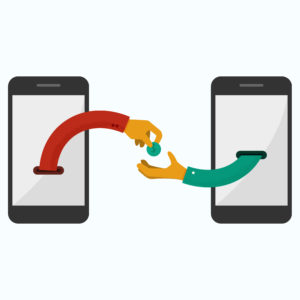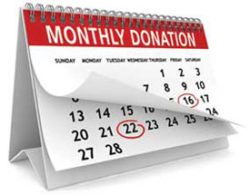our blog
5 Easy Ways Your Nonprofit Can Raise More
by Cary Schwartz
A plan to raise more money begins with attracting new donors to your cause. We understand this can be a challenge. Between planning your existing major fundraisers and keeping your program initiatives going, you likely think you don’t have the time to add another fundraiser to your schedule. That’s a challenge we can help you overcome! Let’s explore a few fundraising methods that will allow your nonprofit to raise more money, and place less stress on you.
While your nonprofit will still need to keep up with its regular fundraising strategies, you can improve your overall fundraising by adding programs that can supplement your revenue. For instance, the time period between your major gala and end-of-year activities might normally see a slump in fundraising. If so, there are easy fundraising methods that can help ensure you continue receiving reliable revenue, even then.
Whether you’re raising funds for a sports team, church, school, nonprofit or other charitable organization, these five simple fundraising strategies can provide valuable supplemental income for your cause:
- Host an Online Shopping Fundraiser
- Leverage Matching Gifts
- Encourage Recurring Donations
- Create an In-Kind Giving Program
- Introduce Consignment Charity
Why are these five strategies to raise more money so simple to implement? Each approach aims to help your nonprofit attract new donors and encourage more donations, while reducing your team’s workload. Each strategy can improve performance, whether by providing convenient ways for donors to give, short-cutting additional steps your staff would need to take, or running all year long after their initial setup.

Your supporters can help your nonprofit raise more money just by shopping online as they normally would. Online shopping fundraising programs provide nonprofits with access to their network of participating retailers. When supporters shop through the online shopping program’s app or browser extension at a participating retailer, a percentage of their total purchases will be sent to your nonprofit.
The amount given to nonprofits comes from the retailers, meaning your supporters can give to your cause without spending any more than they normally would, and without deviating from their usual online shopping routines.
Online Shopping Fundraiser – How to in 3 Steps
For nonprofits interested in online shopping fundraisers, ShopRaise’s guide to shopping for a cause explains how to start one in three steps:
- Partner with an online shopping fundraising program. Your shopping fundraising program will provide your nonprofit with an app, browser extension, or access to their online mall to allow your supporters to raise funds for your cause when shopping online. Research potential programs and sign up for one that has partnerships with popular retailers your supporters already shop at.
- Market your program. Shopping fundraisers are sometimes referred to as passive fundraisers, and while they can generate funds for your nonprofit without major intervention from your nonprofit, you will still need to market your program regularly. To get new supporters to sign up and encourage your current ones to continue shopping through your program, routinely send out messages with information about your shopping program.
- Thank your supporters. As your supporters start shopping for your cause, your nonprofit should begin seeing a steady stream of revenue that will grow to significant amounts over time. To encourage supporters to stick with your program, be sure to reach out and thank them for signing up and helping your nonprofit raise more money.
Once you get your online shopping fundraiser up and running, it can keep generating revenue for your nonprofit indefinitely, as long as supporters keep shopping through your app and browser extension. This means that after launching your program, your team will only need to focus on marketing, making it an easy fundraiser that’s convenient for your supporters and your nonprofit.

Some of your supporters may be able to increase their donations when they give by getting their employer to chip in as well through matching gifts. A gift matching program is a way for businesses to support charitable organizations and demonstrate their commitment to causes their employees care about, by matching donations made by their employees; often at a 1:1 ratio. There are programs with 1:2 and 1:3 ratios, as well.
Like online shopping fundraisers, matching gifts are an easy, effective way to raise more money as your supporters will not need to spend any more than usual to support your cause. Also like online shopping fundraisers, to have a successful matching gift program, your nonprofit will need to routinely prompt supporters to check their matching gift eligibility and fill out any necessary forms.
You can make the matching gift application process more convenient for supporters by using a matching gift database. After donating, supporters will just need to enter their employers’ name into the database, and they’ll be notified whether or not they qualify for a matching gift and paired with their employers’ matching gift application forms.

When it comes to repeat donations, there is a golden rule nonprofits should keep in mind: after the second gift supporters are significantly more likely to continue giving. According to NPOInfo’s charitable giving statistics, while just 20% of donors give again after their first contribution, donors are 60% more likely to become recurring donors after their second gift.
Focusing on recurring donors can be an effective way to raise more money, as keeping your donors is often more cost-effective than recruiting new ones. To encourage more supporters to become recurring donors and contribute their second gift, try these strategies:
- Make opting in easy. When supporters give through your donation page, make becoming a recurring donor as easy as possible. This might involve adding a check box or even creating unique buttons for one-time and recurring gift options, making becoming a recurring donor possible with just one click.
- Provide suggested giving amounts. Supporters, especially first time donors, often aren’t sure how much to give, and suggested giving amounts can provide a bit of helpful guidance. Additionally, displaying low recurring gift amounts next to your normal one-time donation suggested giving amounts can persuade people into becoming recurring donors, even if they ultimately end up giving more in the long run.
- Use one-click upgrades. Supporters who continue to give but do so on an annual or infrequent basis can often be strong candidates for your recurring giving program. Reach out to these supporters with donation requests that make becoming a recurring donor as easy as possible. This can include providing a suggested giving amount based on how much they’re already giving and allowing them to change giving plans with just one click.
To continue raising more money with recurring donations, there are a few simple ways you can invest in keeping your recurring donors engaged once they join your monthly giving program. This can include maintaining a regular communication cadence by sending them messages with topics tailored to their interests, celebrating their commitment to your nonprofit with thank you messages and occasional gifts like t-shirts. Only asking for donation upgrades at strategic moments so as not to be perceived as continually just asking for more money.

Chances are that many of your supporters have items taking up space in their homes that your nonprofit could put to good use. Establishing an in-kind giving program allows your supporters to donate these items directly to your nonprofit, helping them make ethical decisions about previous shopping choices and promoting reusability.
For your nonprofit, in-kind donation programs allow your nonprofit to gain access to goods and services faster, rather than going through the process of sending someone to the store to buy items with donated funds. Additionally, nonprofits can also gain access to significantly high value items and services with in-kind giving that may not otherwise be an option with regular donations.
For example, in-kind giving can include a number of professional services in addition to physical items. This means professionals like photographers, graphic designers, and even lawyers may donate a few meaningful hours of their time to your nonprofit.
To create an in-kind giving program, follow these steps:
- Create a list of accepted items. Often, supporters can be unsure what is appropriate to give to an in-kind giving program. Make a list of accepted items, as well as what quality those items will need to be in to be accepted. Supporters may still have questions about whether your nonprofit can accept something that is not on your list, so give them a way to get in touch with someone at your organization who can answer their questions.
- Establish a drop-off point. To stay organized, determine where and when you will accept in-kind donations. For example, some nonprofits may create a designated location at their office and accept donations during the week, while others might have a specific day or even a location closer to where an initiative is currently taking place where they would prefer items be delivered.
- Distribute donation receipts. Your nonprofit is required to provide donation receipts for all monetary contributions of $250 or more. For in-kind donations, this can get a little more complicated. Whenever an item is donated, provide supporters with a receipt listing a description of the item donated, the donor’s name, and the date the item was received.
In-kind donations can provide nonprofits with access to a range of high-value goods and services you may have otherwise had limited access to. Of course, in-kind donations can also be a bit random, so if your nonprofit is seeking something specific to use as a prize or giving incentive, consider looking into charity consignment programs.

Consignment charity is a process wherein a charity receives a package of goods or services, whether it be jewelry, a vacation, or other high-value items. Then, after the product is sold—often to the highest bidder in a charity auction – the nonprofit will pay the funds for the consignment package.
Essentially, this means that nonprofits have the opportunity to gain access to high-value items before raising significant revenue, then pay back the provider after they have completed their fundraising events to cover the costs and more.
Consignment charity can help nonprofit events raise more money by providing unique, rare, and high-value prizes that may have otherwise been out of the nonprofit’s financial reach. For example, at an auction or raffle, nonprofits without significant connections to major businesses may otherwise need to settle for medium-value prizes that are unlikely to start bidding wars, which tends to be where nonprofits earn their revenue.
If your nonprofit is planning a fundraising auction or raffle and is in need of more prizes, try reaching out to consignment charity programs to fill out your item catalog.
Raise More Money With Strategic Opportunities
Fundraising is essential to your nonprofit’s continued success, and there are a variety of opportunities to earn more between your major fundraisers with a little bit of research. From shopping programs and matching gifts to being more strategic about recurring donations and trying out consignment charity, there are lots of ways your nonprofit can raise more money.
Learn more about how Charity Dynamics can help increase your outreach and fundraising potential

